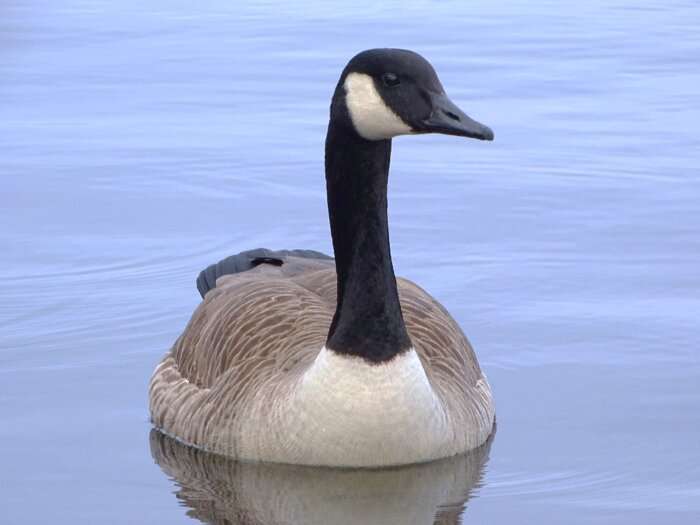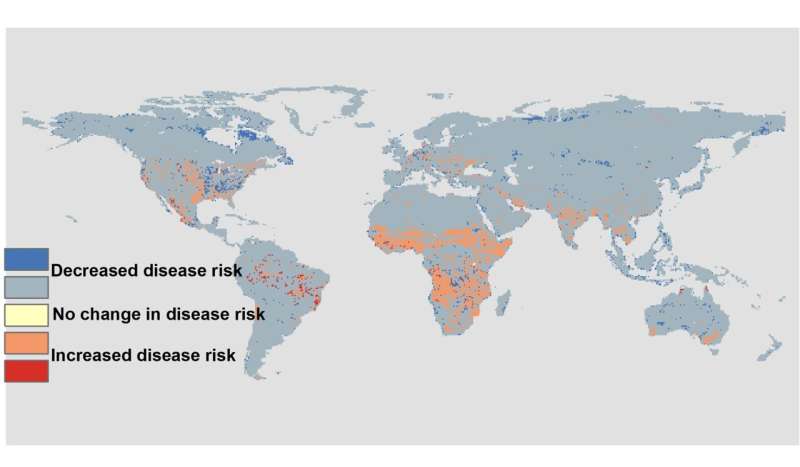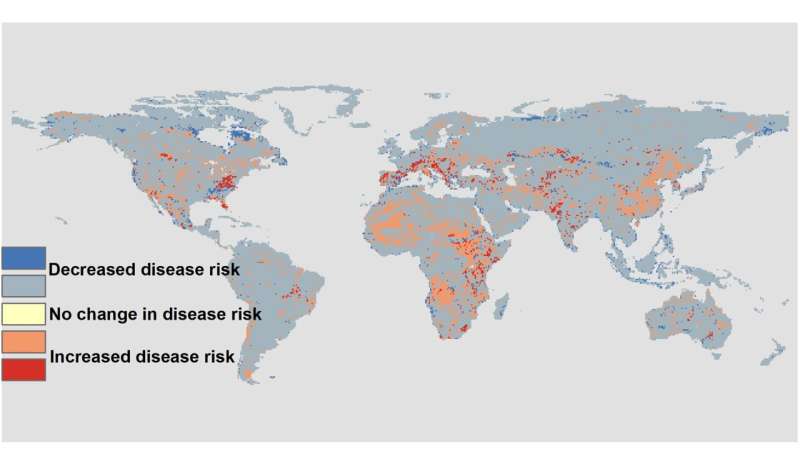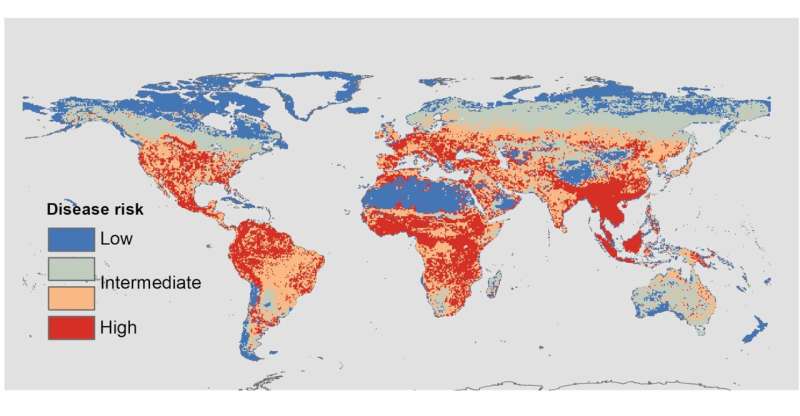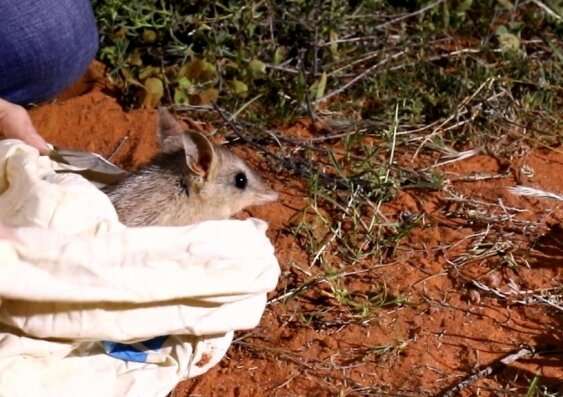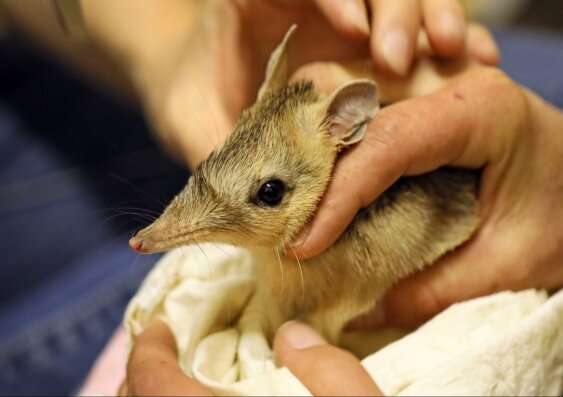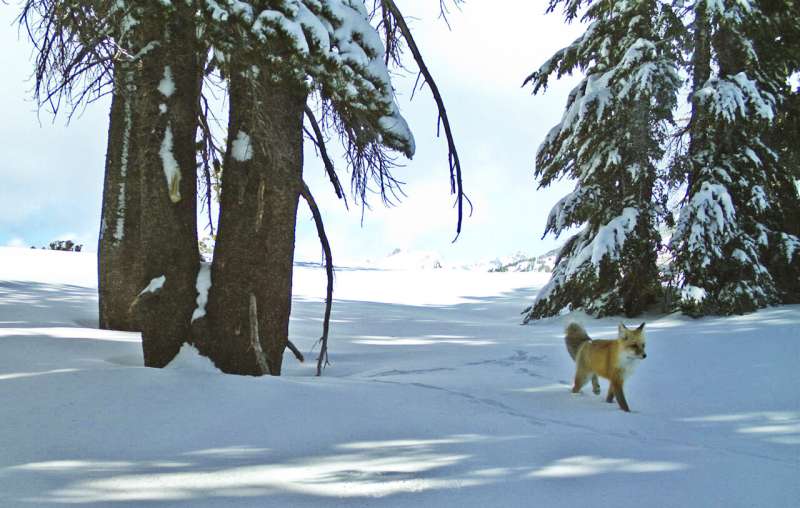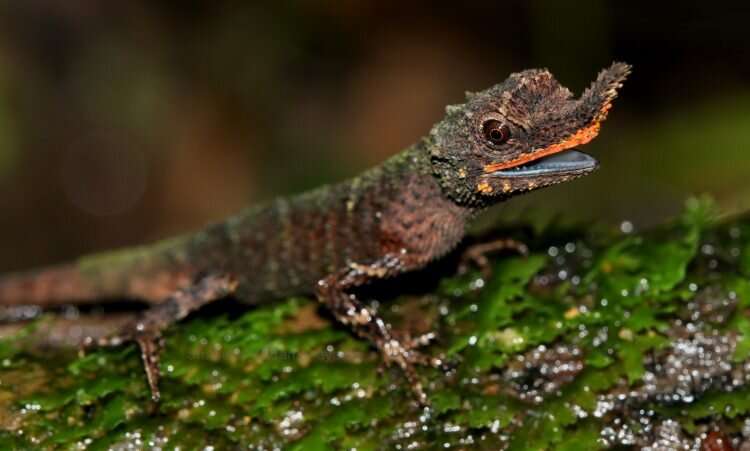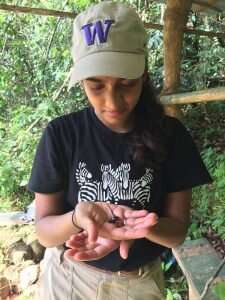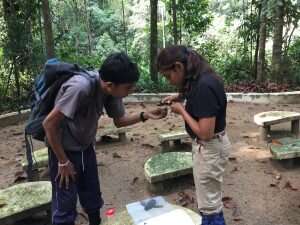One of world's rarest chameleons found clinging to survival
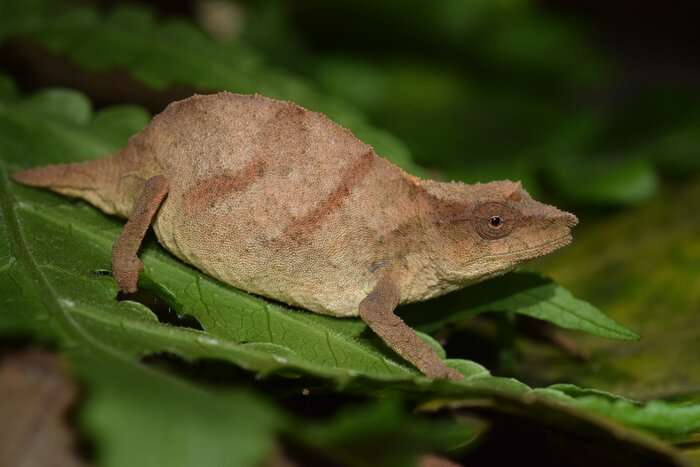
Urgent conservation measures are needed to save a Critically Endangered species of chameleon which has been found clinging to survival in patches of rainforest in Malawi.
But a survey carried out in 2016 by a team from the South African National Biodiversity Institute and the Museums of Malawi—the results of which are now being published for the first time—has found populations of the tiny reptiles in surviving patches of forest.Chapman's Pygmy Chameleon (Rhampholeon chapmanorum), which grows to a length of just five-and-a-half centimetres, was first described in 1992 and is believed to be one of the world's rarest chameleons. It was feared extinct due to the destruction of its native forest in the Malawi Hills, much of which has been cut down for agriculture.
They estimate that the forest—and with it chameleon numbers—has shrunk by 80 percent since the 1980s. A genetic (DNA) analysis also suggests that the animals are trapped in their forest patches, unable to move between them to breed. Without this interbreeding, genetic diversity will be lost over time and this poses another serious threat to the species' survival.
The study, published in Oryx—The International Journal of Conservation, was led by Professor Krystal Tolley from the South African National Biodiversity Institute and the University of the Witwatersrand.
It was her assessment work in 2014 which led the IUCN (International Union for Conservation of Nature) to list Chapman's Pygmy Chameleon as Critically Endangered on its Red List of Threatened Species. Comparing satellite images of the Malawi Hills with those taken in the 1980s revealed dramatic forest loss, with the area where the chameleon was first described having been completely cleared. What remained had become fragmented—small patches of forest, cut off from each other.
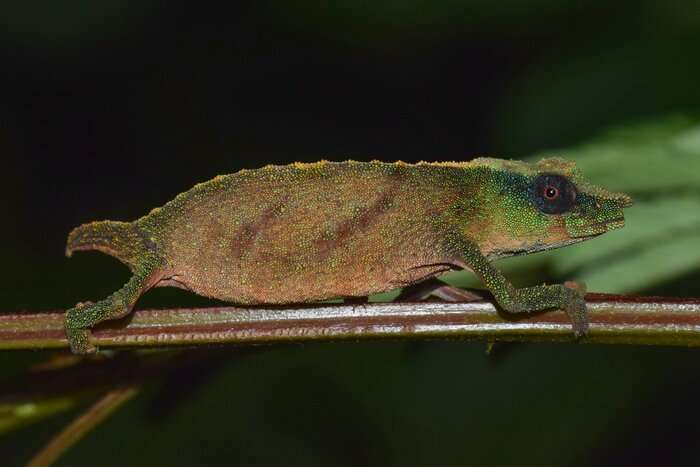
Fearing the chameleon may have become extinct, Prof. Tolley and her fellow researchers turned to crowdfunding website, RocketHub, to raise the money needed to survey the remaining patches for any surviving populations.
Chameleon enthusiasts responded to the appeal, donating $5,670 which included a $1,000 donation from the Scion Natural Science Association, and was enough for the researchers to survey two of the remaining forest patches in the Malawi Hills and an area 95 km away near Mikundi, where 37 of the chameleons had been released in 1998 to try to safeguard the species.
The chameleons were found in all three locations and Prof. Tolley described the survey team's jubilation at discovering that the species was still present.
She said: "The first one we found was in the transition zone on the forest edge, where there are some trees but mostly maize and cassava plants. When we found it we got goosebumps and just started jumping around. We didn't know if we would get any more, but once we got into the forest there were plenty, although I don't know how long that will last."
Samples taken from the chameleons were then analyzed to see if their genetic diversity had also been reduced. While this was not evident, the researchers believe this may be because such effects take time to show.
They did see evidence that the flow of genes between the fragmented populations had been disrupted. In effect, each forest patch is now home to a small, isolated population, unable to breed with chameleons in neighboring patches. This will reduce genetic diversity over time and increases the extinction risk for the species as a whole.
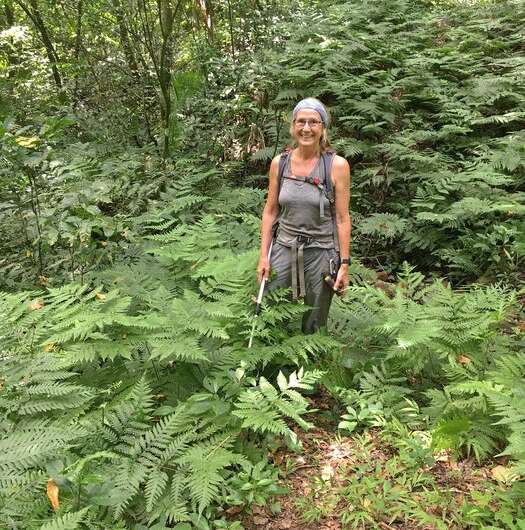
Prof. Tolley said: "The forest loss requires immediate attention before this species reaches a point from which it cannot return. Urgent conservation action is needed, including halting of forest destruction and recovery of habitat to promote connectivity."
The researchers suggest including the remaining forest as part of the nearby Matandwe Forest Reserve so it can be proclaimed as a Key Biodiversity Area, and introducing strong measures to ensure its protection. They also recommend more and thorough surveys of the chameleons to monitor their population and genetic diversity and call for the involvement of local landowners in protecting the Mikundi forest and its population as some insurance against the loss of the chameleon's natural range in the Malawi Hills.
Overall, they say a comprehensive and properly funded action plan needs to be drawn up and enacted to prevent the species becoming extinct.
Prof. Tolley said: "They are little, gentle creatures. Other chameleon species can be hysterical, hissing and biting, but pygmy chameleons are gentle and just beautiful.
"Chapman's in particular are one of the smallest and don't have a prehensile tail like most chameleons, perhaps because they aren't particularly arboreal but walk about on the forest floor in the leaf litter, crawling up into low bushes at night to sleep. They blend right into the leaf litter and perfectly pattern match the dead leaves.
"They are mostly brown but they can change to quite beautiful blues and greens with little dots all over them and that's probably a way of communicating with each other. They also vibrate and we could feel it when we held them. We don't really know why but it's also probably some form of communication. The fact they do it while held in our hands could mean it's a way to try and scare predators."
She added: "I get sad when I think what's happening to them—what we are doing to their habitat. They are really just helpless victims."Team discovers 3 chameleon species
